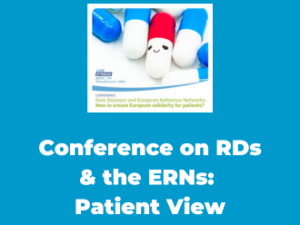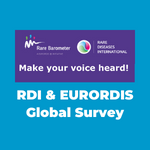A new Addendum to the ERN Board Statement has been drafted by the working group on “Legal & Ethical issues and relations with Stakeholders” (ERN LES WG) to clarify the relationship between ERNs and industry.
In view of the importance of the role of industry in defining the knowledge of rare conditions and developing diagnostic tools and therapies, the Board of Member States (BoMS) accepted the Statement of the ERN Board of Member States on European Reference Networks (ERNs) & industry on 25 June 2019. The new Addendum has been requested by the BoMS to clarify the below concepts present in the Board Statement, in order to ensure a homogenous understanding across the ERNs:
Definition of Industry: The BoMS statement discussed the relationship between industry stakeholders and ERNs. The definition of industry includes commercial parties such as the pharmaceutical industry but also industries involved, among others, in the development of tools, software, methods for diagnostics, care and well-being of rare disease patients. In cases of other eventual private funding, the ERN Coordinator should disclose any conflict of interest through the existing conflict of interest form, put at their disposal (version to be validated by the BoMS).
Outcome measures: are used to assess the (positive or negative) effect of an intervention or treatment. Outcome measures, such as mortality, readmission, patient experience, etc., can be considered as the quality and cost targets healthcare organizations are trying to improve. The definition of outcome measures for clinical trials is not under the scope of this document.
Registries: Patient registries are databases containing information about individuals and their health status. In case of ERNs, the aim is to have registries of patients who are affected by a specific rare or low prevalence complex disease and condition. Even though registries must allow the identification of participants for different purposes including offers to participate in clinical trials, any collection, access, use and re-use of such information must be done in line with the General Data Protection Regulation (GDPR). In the light of the above, only authorised personnel can have access to the registry, following the data access procedures put in place from the governing bodies of the specific registry. Even if the GDPR provides for a special data protection regime in relation to research, Art. 5 of the GDPR fully applies for the processing of those data (lawfulness, fairness, transparency, purpose limitation, data minimization, accuracy, storage limitation, integrity and confidentiality, accountability). Only anonymous pooled data from several countries can be shared with industry. Each ERN will define what data is collected for a specific disease; this might differ between different diseases/registries.
Independent external body: An independent body is a group established to give a view without bias. Members of such a body should be a group of independent individuals (for instance, from the administrative department of a healthcare organisation) who have been assigned to this task and have been previously accepted by the BoMS. Neither any of the Industry Partners in question nor any of the experts involved in ERN Governance can be members of such an independent external body. The independent external body will have to make sure that financial transparency and compliance with GDPR is guaranteed.
Funding of ERNs: In case of funds allocated by the industry, it is the prerogative of each ERN to decide on the use of these allocated funds. Funding an ERN activity should be done for a specific need, identified by the relevant ERN. The funding used must be documented and transparency should be ensured. This should be revised with care as ERNs are not legal entities.
Multiple funding mechanism: Describes the situation where funds are allocated by multiple industry stakeholders and/or possible other funders (i.e. patients’ organizations, national funders, legacy etc.) for the activity of one or several ERNs. It also includes the situation where a single industry stakeholder allocates funds to several ERNs.
Pilot Projects: A definition will be provided in a separate and dedicated addendum, following the conduct of an explanatory study, in order to identify the various areas of interests for the development of the pilots and the existing experiences adopted for the funding of registries and clinical trials.




